Article content
There’s a price shocker coming at the pumps.
With provinces and territories now rolling out plans to COVID-19 vaccinate children aged five to 11, many parents eagerly signed their children up to be among the first in line.
But not everyone is pouncing on the opportunity. Some parents have more questions before their kids get the jab.
Nathan Maharaj and his wife were up bright and early Tuesday registering their nine-year-old son for his first dose of a COVID-19 vaccine in Toronto.
He’s excited Edmund can feel safer returning to karate classes, for instance, and will feel more comfortable planning visits to Ripley’s Aquarium, Ontario Science Centre or the movies.
“It’s a threshold we needed to cross to do things that we were comfortable doing before and as things are opening up again,” Maharaj said.
“We don’t want to be going there and then, you know, for the next 72 hours praying for no symptoms of anything to emerge and then also isolating from others because who knows what we’re carrying.”


In Coquitlam, B.C., Mike Romaniuk is digging through news sites and studies about how both COVID-19 and the vaccines for it are affecting children. While everyone in his family is up to date with B.C.’s recommended immunizations and received this season’s flu shot, he is still unsure about the COVID-19 vaccine for his daughters Harper and Georgia, who are respectively aged four and two.
“There’s definitely an aspect of ‘I don’t want to be first for my kids, I don’t want to risk,’ but I recognize on both sides there’s risk. Not doing it is a risk as well,” Romaniuk said.
“The more data, the more confidence, I think, especially if it’s tabulated or presented in a way that’s easily understandable and comparable.”
He would love to be able see the studies Canadian health officials are analyzing to create their recommendations for children, for instance, saying that for him it would help instill more confidence.
“There’s a lot of parents that I interact with that have concerns. They’re scared to ask [questions], scared to speak out. There’s quite a stigma around it,” he said.
The drive to vaccinate younger children against COVID-19 could prove tougher and perhaps take longer than earlier age groups, but medical experts say they’re ready to answer all questions and meet parents and caregivers where they’re at.
Dr. Susy Hota, University Health Network’s medical director for infection prevention and control, answers questions about the first COVID-19 vaccine approved for Canadians aged 5-11. 7:33
Before the pandemic, the term vaccine hesitancy was most often discussed in the context of parental decision-making, according to medical anthropologist Ève Dubé, a researcher at the Quebec National Institute of Public Health who has studied it for more than a decade.
She said before the pandemic about one-third of parents were vaccine hesitant.
“Not all those parents refused vaccines, but some were accepting with concerns, being unsure that this was the right decision,” said Dubé, who says education on the issue helps build trust and motivates parents to inoculate their children.
Looking at recent surveys, she says, there appears to be more hesitancy about COVID-19 vaccinations for the five-to-11 age group than for earlier cohorts.
“For COVID, I think the situation is a bit different … because of the fact that children are less at risk of COVID, their direct benefit of vaccination is less clear than for measles or other childhood vaccinations,” she said.
Traditional mass public health campaigns with posters and fact sheets about the importance of vaccination typically work to reach the majority. Those positively discussing vaccines with fellow parents can also help, Dubé said.
However, for those with many more concerns, health officials employing a targeted, one-on-one approach are most effective, she said. She admits it is more resource and time intensive.
“It might be a slower start of the [age 5-11 vaccination] campaign,” Dubé said. “But with time … the vaccine hesitancy may decrease. Most people never want to be the first in line to do something new.”
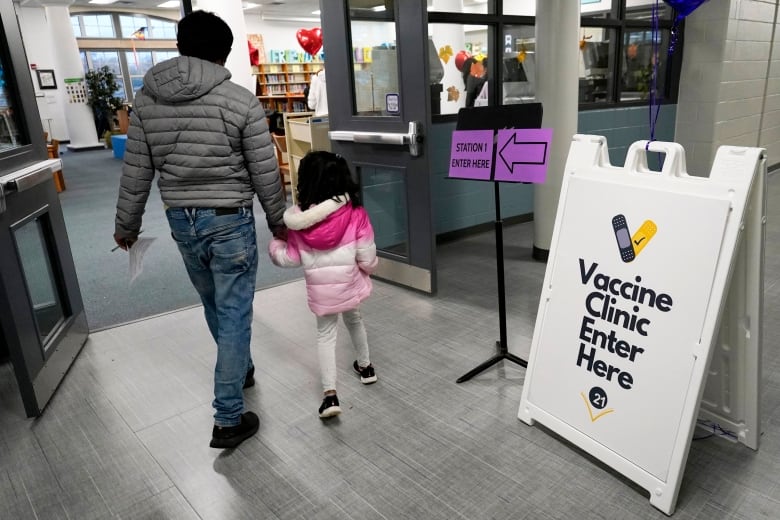

According to historian Catherine Carstairs, who has researched health and medicine, many people pointing to when “everyone rushed out to get the polio vaccine” forget that it actually took many years to achieve consistent uptake across different age groups.
“I think we may see something similar with COVID-19,” said the University of Guelph history professor.
Catherine Carstairs, a history professor at the University of Guelph, notes how even with the polio vaccine in the 1950s, people choose to wait awhile before choosing to be immunized. 1:26
While many point to a discredited 1990s-era study falsely linking autism and vaccination for increased hesitancy of and opposition to vaccination in recent years, Carstairs believes there have also been many other contributors.
This includes more skepticism of the medical profession, the rise of “natural health” products and non-traditional medicine, a growing feminist health movement and a shift in parenting styles that puts “less reliance on outside expertise and more of a sense of ‘I know my child better than anyone,'” she said.
As a parent of a five-year-old himself, infectious diseases physician Alexander Wong empathizes with fellow parents who, given how fast the COVID-19 vaccines have rolled out, have more questions and simply want to do what’s best for their kids.
“We need to really kind of be open-minded and work really hard to address those concerns with parents so that we can get as many kids vaccinated as possible,” he said in Regina.
Dr. Alex Wong outlines a few important points about COVID-19 vaccines for parents of younger children. 2:14
A question Wong hears regularly is that if COVID-19 has caused relatively few kids to become severely ill, hospitalized or die than adult populations, why do we need to vaccinate?
His response: “No kid should get sick or, God forbid, die as a result of a preventable illness.… We vaccinate for things like measles, rubella, mumps, norovirus, all these other things without thinking twice. And the number of deaths caused by those types of disease conditions pre-vaccine were far, far lower than what we’re seeing with COVID.”
More practically, he added, vaccination will minimize the intense disruptions kids and families have faced throughout the pandemic at school, with extracurricular activities and time spent with extended family and friends.
Another thing he highlights for parents is that real-world data is coming from the U.S., which approved the vaccine for children aged five to 11 in early November. Wong notes that about three million Americans kids have had one dose thus far with no major flags about side effects.
“That’s a reassuring safety signal,” he said. “Everybody is scrutinizing this vaccine unlike anything else probably in history quite frankly.”


Paul Offit, a professor of pediatrics and member of the Advisory Committee on Immunization Practices that authorized the COVID-19 vaccine for children in the United States, empathizes with those who feel there hasn’t been enough data gathered on this young cohort.
Yet there has never been this abundance of real-word data on teen and adult populations that can be applied to children, he told CBC Radio’s The Sunday Magazine.
Offit says contracting COVID-19 is a much riskier proposition than potential vaccine side effects. One risk of natural infection is myocarditis, or an inflammation of the heart muscle.
He said the risk of myocarditis is roughly one in 45 people who contract COVID-19, compared with roughly one in 50,000 among people who get the vaccine.
“And it’s much more severe [with infection],” Offit added.
He also pointed out that young kids who contract COVID-19 are at higher risk of a condition called Multisystem Inflammatory Syndrome in Children (MIS-C), “where myocarditis occurs 50 to 75 per cent of the time.”
LISTEN | Decision to approve COVID-19 vaccine for kids ‘nerve-wracking’ says U.S. doctor:
The Sunday Magazine24:13Decision to approve COVID-19 vaccine for kids ‘nerve-wracking’ says American doctor
Canadian kids aged five to 11 are up next for COVID-19 shots, after Health Canada’s decision Friday to approve the Pfizer vaccine for them. Dr. Paul Offit is a member of the vaccine advisory committee that made the same recommendation in the United States earlier this month, a decision he describes as “nerve-wracking,” because he knows there’s some risk involved for young kids. But, as he writes in his new book, You Bet Your Life: From Blood Transfusions to Mass Vaccination, the Long and Risky History of Medical Innovation, all medical breakthroughs involve risk… and not getting the shot is not a risk-free choice. 24:13
In the past 200 years, any side effects associated with vaccines invariably arise within six weeks of the dose, says Offit, who is also director of the Vaccine Education Center at the Children’s Hospital of Philadelphia.
“It’s perfectly reasonable to be skeptical… You should have questions and you should have those questions answered,” he said.
“There’s a line though between that and someone who [doesn’t] trust the pharmaceutical industry, they don’t trust the medical community, they don’t trust the government and it doesn’t matter what you say, they’re simply not going to get a vaccine.
“That to me is not a vaccine skeptic. That’s a vaccine cynic.”
Have questions about this story? We’re answering as many as we can in the comments.
Gas prices have not been this high since August 2022
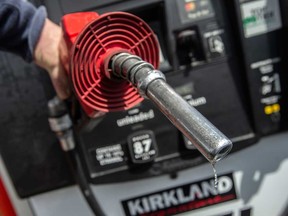
There’s a price shocker coming at the pumps.
Advertisement 2
Article content
Gas in Ontario, including the GTA, will go up 14 cents a litre overnight for customers filling up on Thursday, says Dan McTeague, the president of Canadians for Affordable Energy.
Article content
“So going from $1.65.9 (per litre) going to $1.79.9,” said McTeague adding the increase will affect the entire province except for northwestern Ontario, which gets its prices from the prairies market.
“That’s the highest level since August, 2022, almost two years ago,” he added.
Recommended from Editorial
McTeague said the reason for the price hike is that stations are switching over to summer-blend gasoline.
“Around this time of year prices go up to reflect the new blend of gasoline, which is more expensive to make,” he explained. “Butane is used in the winter, for gasoline, whereas in the summer it’s alkyaltes. Alkyaltes are extremely expensive.”
Advertisement 3
Article content
“In the winter you want your ignition to start quickly in cold temperatures, you uses volatile butane. You take that out in the summer. That’s a big difference. This is going to be around for awhile and it could get higher,” McTeague said.
McTeague also blamed the rise in gas prices in Canada on the carbon tax increase, the rising price of oil, and the weak Canadian dollar.
“It just makes a bad situation worse,” he said. “It’s just another brick in the wall, another load on the camel’s bank. The cost of denying our resources, blocking pipelines, is one of the most significant reasons why the Canadian dollar is so weak.”
Article content

CALGARY — A wildfire in west-central Alberta that was sparked by a natural gas pipeline rupture is under control, but an investigation into what caused the pipeline to break could take months or even years.
As of Wednesday morning, there was very little fire activity left in Yellowhead County, where a 10-hectare fire burned on Tuesday about 40 kilometres northwest of Edson.
“But for it to be considered extinguished, we’re going to have to hot spot,” said Caroline Charbonneau, area information co-ordinator with Alberta Forestry and Parks.
“That means we’ll have to dig into the ground, look and feel for hot spots, and then douse it with water. And that could take several days.”
ADVERTISEMENT
The fire on Tuesday, which occurred as much of Alberta is dealing with extremely dry early spring conditions, was sparked when a natural gas pipeline owned by TC Energy Corp. ruptured.
There were no injuries, and the fire was never a threat to any surrounding communities. The affected pipeline segment was isolated and shut in and there is no more gas leaking from the pipeline.
The Canada Energy Regulator had inspectors on site Wednesday to monitor the company’s response and the Transportation Safety Board is investigating the incident.
According to CER, there have been 12 natural gas pipeline ruptures in Canada since 2008, and Tuesday’s incident near Edson was the first rupture on that particular pipeline within that time period.
The 36-inch diameter pipe that ruptured is part of TC Energy’s NGTL pipeline system, which transports natural gas from Alberta and northeast B.C. to domestic and export markets. The system spans 24,631 kilometres and connects with TC Energy’s Canadian Mainline system, Foothills system and other third-party pipelines.
The NGTL pipeline system is like a web made up of different lines that have been developed in stages.
In 2022, there was a rupture on a separate part of the system that resulted in an explosion and fire near Fox Creek, Alta. There were no injuries.
A TSB investigation into that incident took more than 14 months, and concluded that the pipeline ruptured due to reduced pipe wall strength caused by external corrosion.
While the primary risk of a crude oil pipeline leak is an oil spill that harms the local ecosystem, natural gas pipeline ruptures can and do result in fires or explosions, said Bill Caram, executive director of the Pipeline Safety Trust, a U.S.-based non-profit organization.
“The chances are extremely high that a molecule of natural gas that enters a pipeline will go through that pipeline without a failure. Pipelines are quite safe, and when you look at incident rates compared to other modes of transportation like rail or truck, they are much less likely to have a failure,” Caram said.
“But what you don’t get a sense of by looking at the risks of pipelines in that way is how catastrophic a failure can be when it does happen.”
According to the TSB, there were 19 recorded incidences of fires related to pipelines in Canada between 2012 and 2022.
The TSB’s most recent report on pipeline transportation safety in Canada states that in 2022 there were 100 companies transporting either oil or gas or both in the federally regulated pipeline system, which includes approximately 19,950 km of oil pipelines and approximately 48,700 km of natural gas pipelines.
That year, there were 67 pipeline transportation accidents and incidents on federally regulated pipeline systems, according to the report.
That number was well below the 10-year average of 112 occurrences, and was also the lowest number of occurrences since 2019, when 52 pipeline accidents or incidents were recorded by the TSB.
The TSB defines a pipeline “accident” as an incident that results in a person being injured or killed, a fire or explosion, or significant damage to the pipeline affecting its operation.
Less severe pipeline events that involve the uncontrolled release of a commodity or a precautionary or emergency shutdown are classified by the TSB as “incidents.”
There have been no fatal accidents directly resulting from the operation of a federally regulated pipeline system since the inception of the TSB in 1990.
This report by The Canadian Press was first published April 17, 2024.
Companies in this story: (TSX:TRP)
Amanda Stephenson, The Canadian Press
Police say one former and one current employee of Air Canada are among the nine suspects that are facing charges in connection with the gold heist at Pearson International Airport last year.
At a news conference Wednesday on the one-year anniversary of the heist, police confirmed that five suspects were arrested and four others are facing charges in connection with the largest gold theft in Canadian history.
Police said the suspects face a total of 19 charges and Canada-wide warrants have been issued for the arrest of three of the suspects who have not yet been apprehended. All of the suspects arrested in connection with the heist have been released on bail, police confirmed in a news release issued Wednesday.
Peel Regional Police Chief Nishan Duraiappah said the heist was “carefully planned” by a “well-organized group of criminals.”
“This story is a sensational one and one which probably, we jokingly say, belongs in a Netflix series,” he said.
Police said 6,600 gold bars were stolen from Air Canada’s cargo facility on the evening of April 17, 2023 by a suspect who arrived at the warehouse in a five-tonne delivery truck.
The gold, along with about $2.5 million in foreign currency, had been shipped to Toronto from Zurich in the hull of an Air Canada plane and was offloaded to an Air Canada cargo facility shortly after the flight landed at Pearson Airport that afternoon.
Police allege that the suspect came into possession of the stolen gold and bank notes after presenting Air Canada personnel with a fraudulent airway bill.
“The airway bill was for a legitimate shipment of seafood that was picked up the day before,” Det.-Sgt. Mike Mavity, the major case manager for the joint investigation, dubbed Project 24K, told reporters on Wednesday.
“This duplicate airway bill was printed off from a printer within Air Canada cargo.”
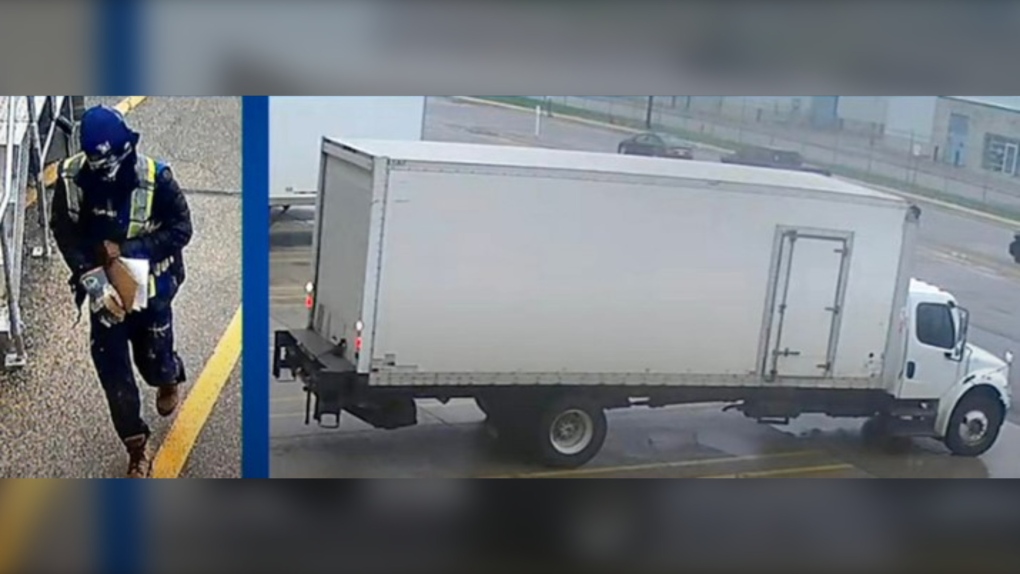

Brinks Canada, which was hired to provide security and logistics services for the transportation of the shipment, showed up at the facility a few hours later to pick up the items, police said.
According to investigators, when Air Canada employees tried to locate the container, they realized it was missing and quickly launched an internal investigation. Police were notified about the stolen goods shortly before 3 a.m. the following day, Mavity said.
An exhaustive investigation followed, police said, with officers reviewing video surveillance footage from 225 businesses and residences in an effort to track the path of the truck, which has since been recovered.
Mavity said that last summer, they identified 25-year-old Durante King-McLean as the driver of the truck but were unable to locate him.
In September 2023, Mavity said King-McLean was stopped in rental vehicle by Pennsylvania State Police near Chambersburg, Pennsylvania.
“After a brief foot chase, he was detained and troopers located 65 illegal firearms in the vehicle,” Mavity said Wednesday.
According to Mavity, investigators believe that the stolen gold was melted down and sold and the proceeds were used to purchase illegal guns for a firearms trafficking operation.
He said members of Project 24K have been liaising with the U.S. Alcohol, Tobacco, and Firearms Bureau (ATF) with respect to this aspect of the investigation.
Speaking at the news conference on Wednesday, a representative from the ATF said the law enforcement agency believes the 65 guns seized during the arrest of King-McLean were bound for Canada.
While King-McLean is currently in custody in the United States, he is now wanted on multiple charges in connection with the gold theft.
“We are alleging that some individuals who participated in this gold theft are also involved in aspects of this firearms trafficking,” Mavity added.
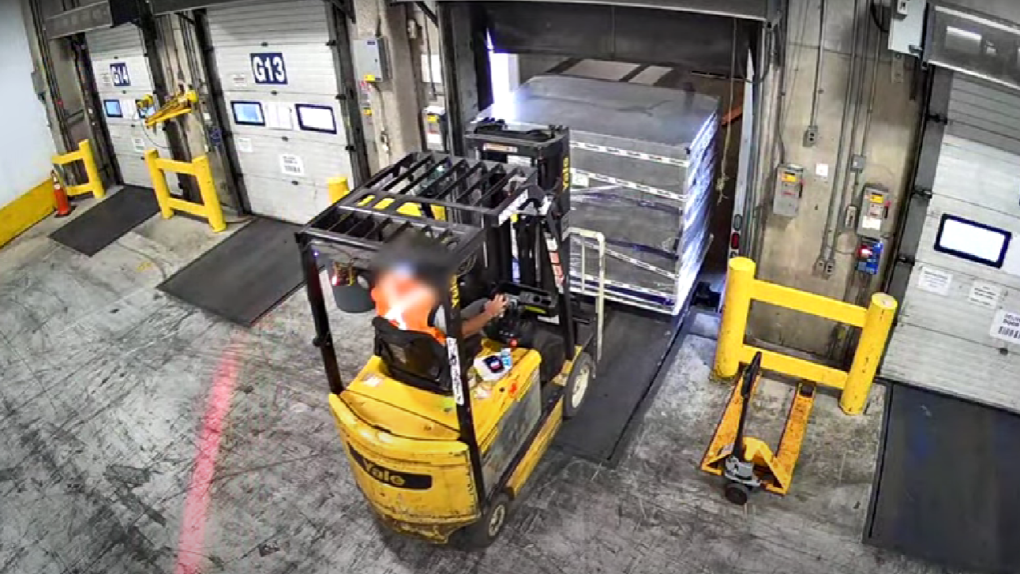

Two “debt lists” were found by investigators at separate locations during the investigation, police said.
“A common term in drug trafficking investigations, we believe these lists actually show where the money was distributed when the gold was sold by the suspects,” Mavity said.
He said the names on both lists are “consistent” and police are trying to identify all of those identified.
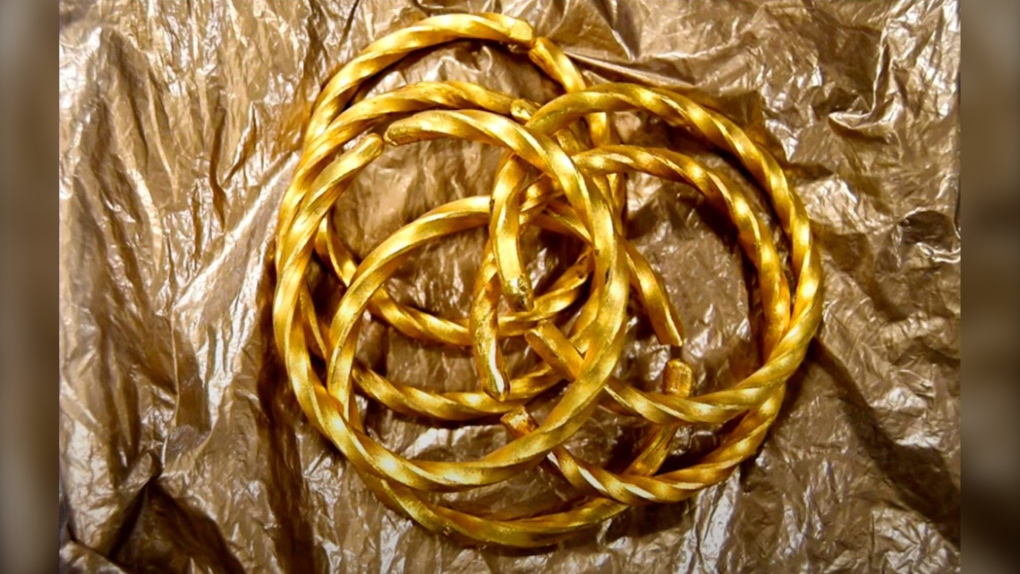

Police said one current Air Canada employee, identified as 54-year-old Brampton resident Parmpal Sidhu, has been charged with theft over $5,000 and conspiracy to commit an indictable offence. A Canada-wide warrant has been issued 31-year-old Simran Preet Panesar, who police said resigned from his position as a manager at Air Canada back in the summer.
“He has been known to us since early on in the investigation. He actually led a tour for Peel Regional Police before we knew his involvement,” Mavity said Wednesday.
He added that police have an idea where Panesar may be but did not elaborate on a possible location.
Mavity said he believes the suspects needed employees on the inside to carry out the heist.
“Because of their position within Air Canada, in my opinion, yeah they needed people inside Air Canada to facilitate this theft,” he said.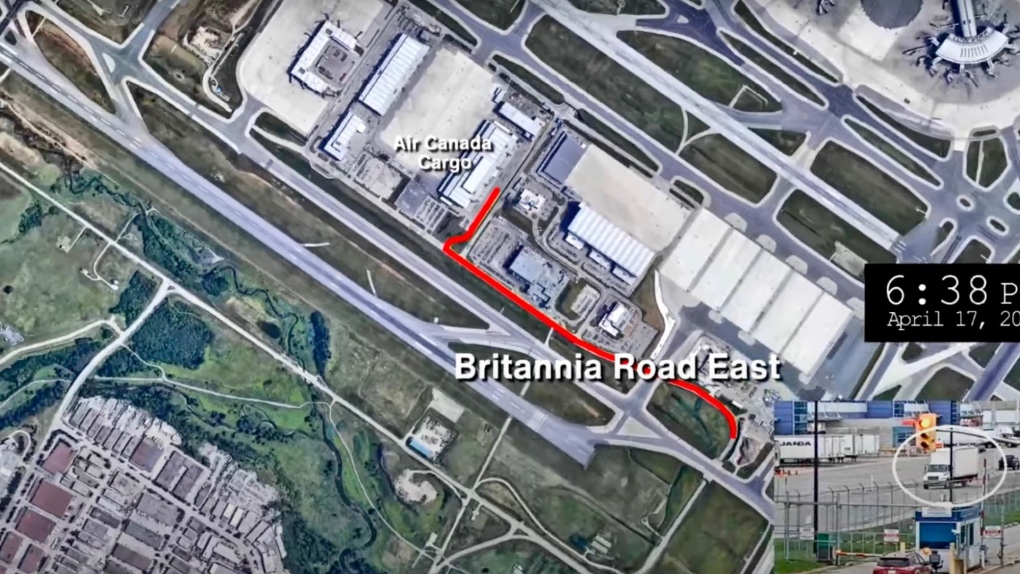

Rupture on TC Energy's NGTL gas pipeline sparks wildfire in Alberta – The Globe and Mail
Saudi Arabia Highlights Investment Initiatives in Tourism at International Hospitality Investment Forum




Cytiva Showcases Single-Use Mixing System at INTERPHEX 2024 – BioPharm International
Squatters at Gordon Ramsay's Pub Have 'Left the Building' After Turning It Into an Art Café – PEOPLE




Nasa confirms metal chunk that crashed into Florida home was space junk




The Earthquake Shaking BC Politics
Tim Hortons says 'technical errors' falsely told people they won $55K boat in Roll Up To Win promo – CBC.ca




Bill Morneau slams Freeland’s budget as a threat to investment, economic growth
Comments